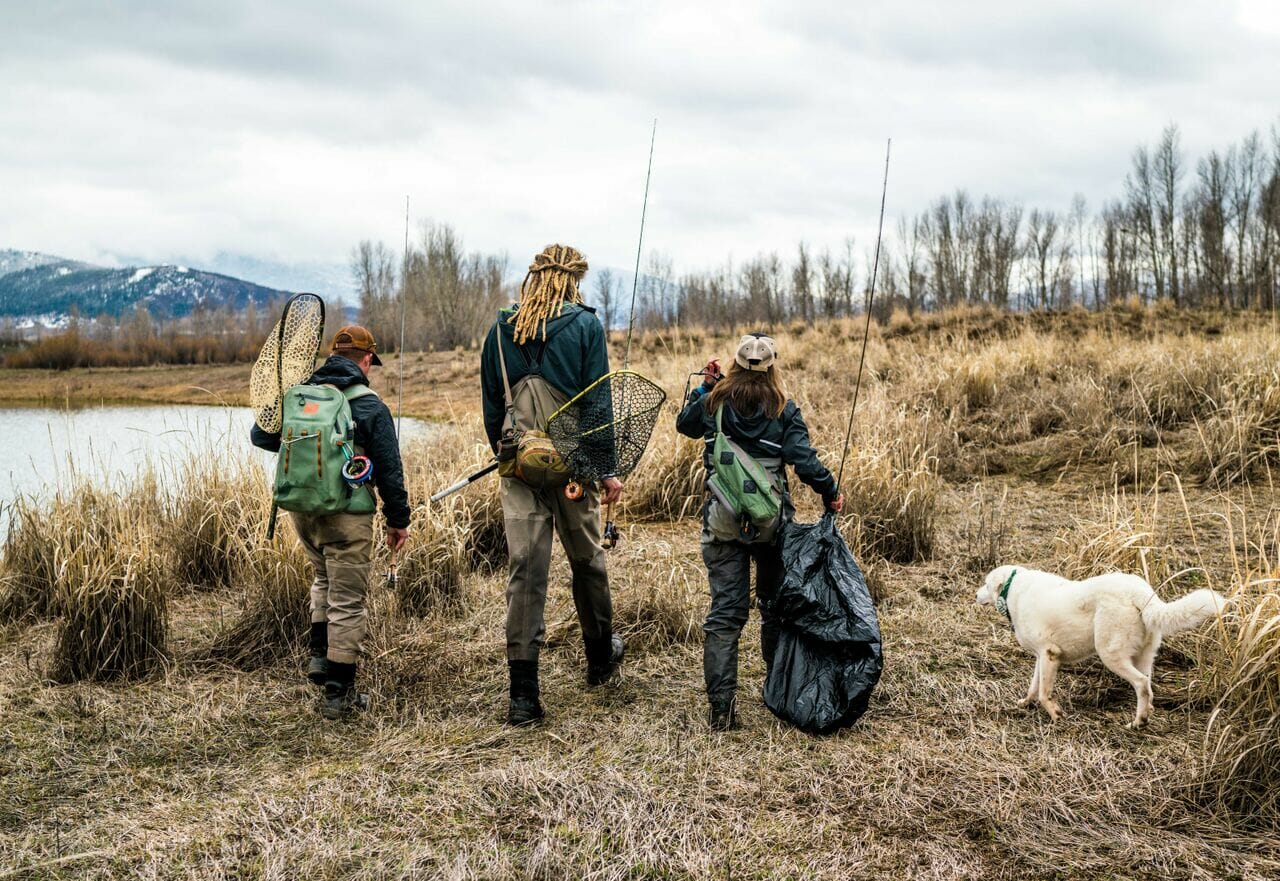
TU Costa 5 Rivers Club Spotlight:
Washington and Lee University
Thanks to the leadership of co-presidents Tanner Harron and Drew Sorrells, the Washington and Lee University Fly Fishing Club is experiencing record-high engagement and membership numbers.
Located in Lexington, Virgina, Washington and Lee’s 98 club members have plenty of opportunities for club outings. Follow along below to learn all about how the club promotes fly fishing and conservation in the Southeast.

Tell us a little bit about your club.
In our Instagram bio we say that we’re just some fishy students at Washington and Lee University, and I think that’s pretty much how we like to think of ourselves. We’re in the club because we share a common passion for fly fishing, and students join because they want to be a part of that, or they want to learn what fly fishing is all about.
I think what makes us somewhat special is that we are completely run by students. Apart from our incredible faculty advisor, Dr. Robert Humston, it’s just us making decisions and running the club. We want to be a highly organized and well-functioning club, but what I think truly draws people in is that when you come out to a club event or trip, it just feels like you’re hanging out with your buddies on the water.
How did your club get started?
Our club was founded several years ago— one of the first 5 Rivers clubs to be founded. One of the neat things that has been a motivator for me as well as my co-President and good friend, Drew Sorrells, is the plaque from 5 Rivers dedicated to our club in 2012.
When Drew and I found this plaque sitting on the wall in the Outing Club Barn loft, we were curious and prompted to do some more research into the club’s recent history. We came across articles talking about former club president Oliver Netterer and his amazing dedication and success with the club.
After seeing some of the awesome stuff the club did in the past, we felt inspired to make it our mission to try and leave things better than we found them.
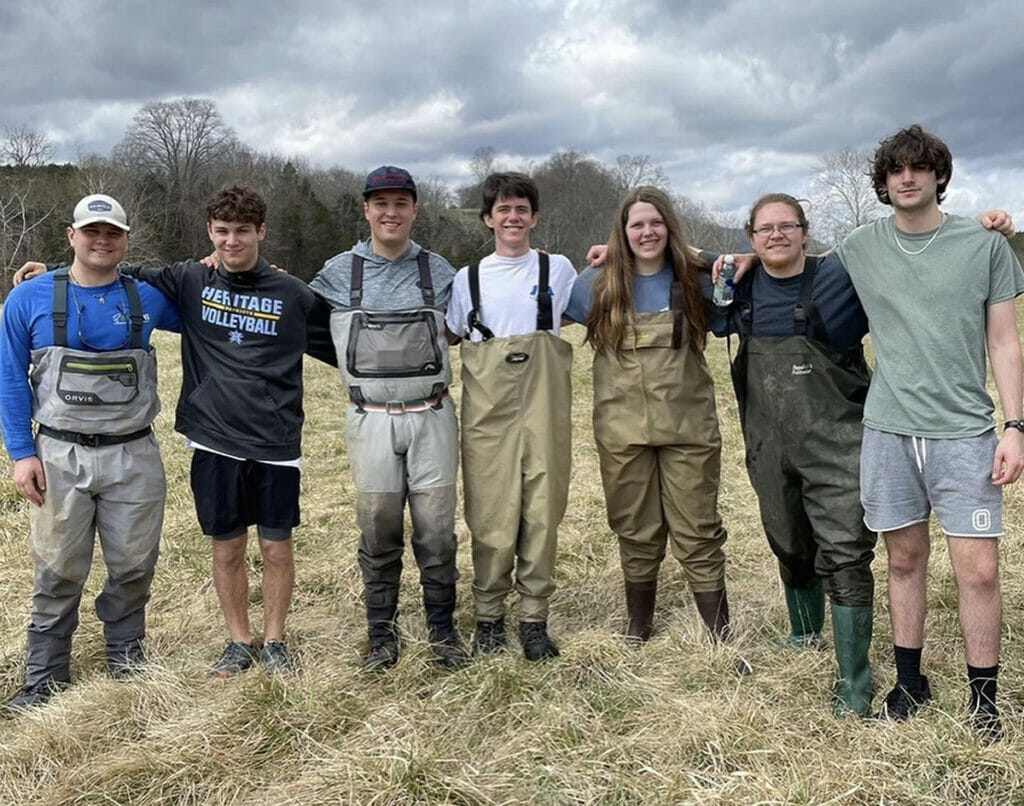
Our club has experienced various levels of success and our activity has fluctuated over the years between different groups of leaders. During the COVID-19 pandemic, University regulations stated that we weren’t allowed to leave Rockbridge County and were required to be masked at all times, so trips and overall activity fell to the wayside. We’ve been in the process of rebuilding since then.
Is your club affiliated with any other student organizations on campus?
We work closely with the WLU Outing Club. The Outing Club is the largest club on campus dedicated to providing opportunities for students to engage meaningfully and make incredible memories in the outdoors during their time at W&L.
The Outing Club has a large amount of gear and resources, so it has been very helpful to work with them and take advantage of some of those things rather than build everything from scratch.
We’re incredibly lucky to have an organization like that on campus that is willing to help us out with storing our club rods, lets us borrow camping gear, and allows us a place to meet when we get together for 5 Rivers events or in preparation for our next adventure.
What is the demographic of your membership and board?
Our club has struggled for many years with changing the general demographic both in leadership as well as the club membership. This issue is not unique to our club but something which has received attention on a national level as well, with movements geared towards encouraging more women and minorities to develop an interest in fly fishing.
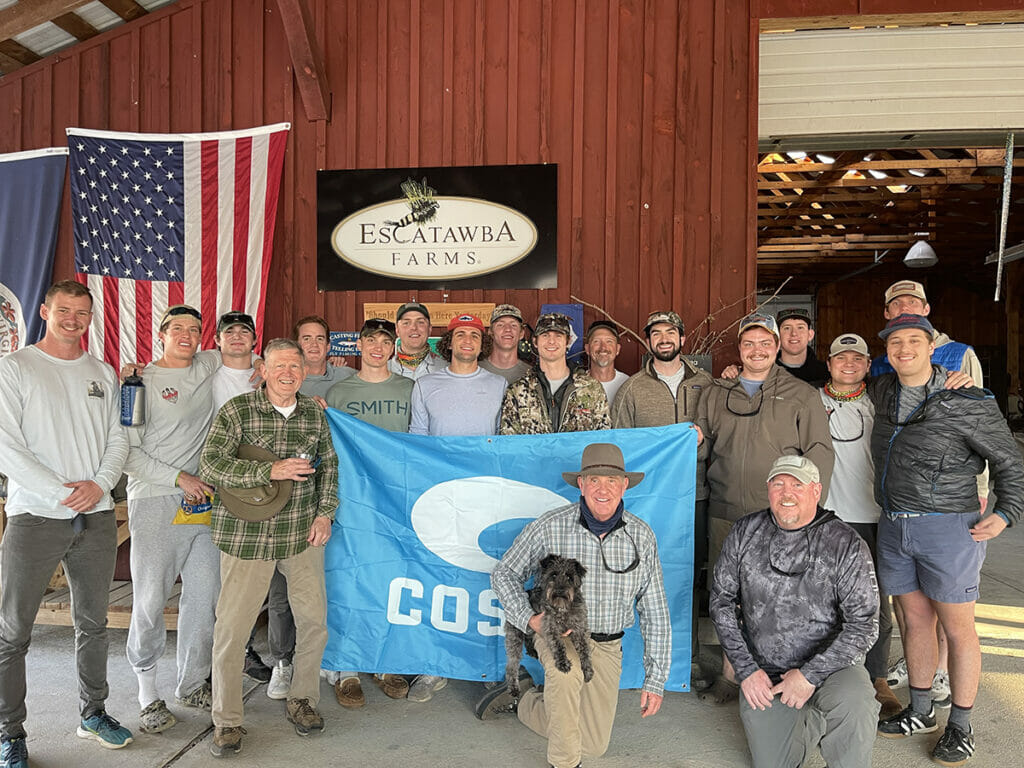
In this regard, the club dynamic has been changing rapidly. We’ve seen more women participating in our events this year than ever before, which has been incredibly hopeful for a more inclusive future. Of the students who attended our fall reading days trip to South Carolina, nearly half were women and many club members had very limited experience fly fishing.
This year, we’ve seen a lot more participation across the board in terms of gender, class, and experience level which has been encouraging as Drew and I will be graduating soon.
What’s the fishing scene like in Lexington?
Our school is nestled in between the Blue Ridge Mountains and the Allegheny Mountains. Here, we are lucky enough to have access to some of the most incredible trout fishing in Virginia.
In addition to fishing streams with stocked or wild rainbows and brown trout, there is a whole host of native brook trout streams to be discovered by adventurous anglers who aren’t afraid to venture off the beaten path a little bit.
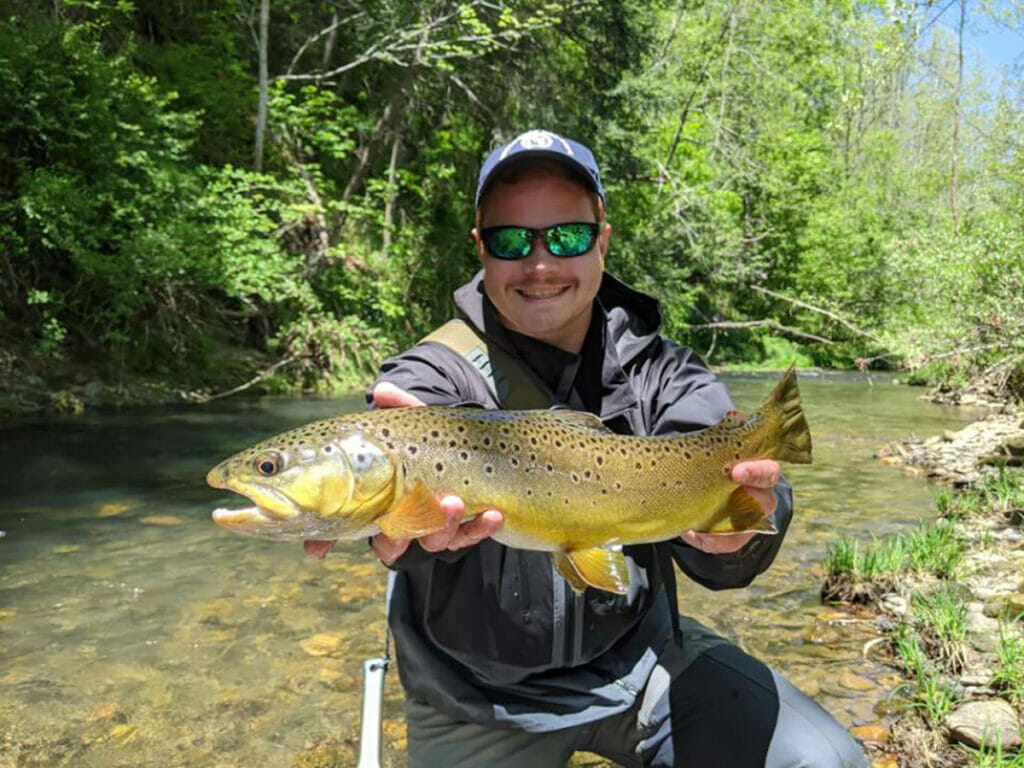
If trout fishing isn’t your forte, the valley holds plenty of excellent warmwater fishing for bass, panfish, and various large cyprinids. The James River has a lesser-known muskellunge fishery, the allure of which has been known to entice college anglers from time to time.
Finally, for those willing to make the journey out to Smith Mountain Lake, you may be rewarded with the time of your life fighting some of the large landlocked striped bass that patrol the lake’s waters.
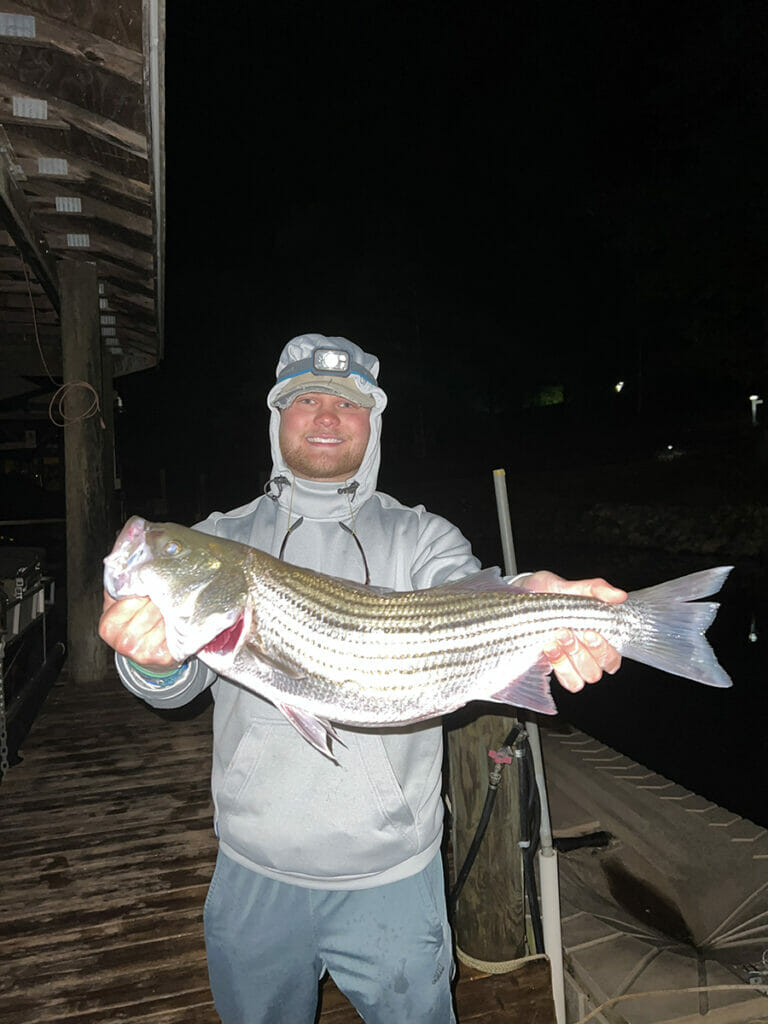
What programs and events do you have planned for the year?
We started out this semester with various casting clinics, beginner skills classes, and local trips to trout streams around the area. We have had a tremendous amount of success growing interest in our club, and it has been really cool to see the number of students repping our t-shirts around campus.
On our largest trip to date, we took a group of ten down to South Carolina to fish for tailing redfish on the flats and in the lagoons around Charleston. This trip was a dream come true for our club, and it was especially exciting to see members who were new to fly fishing or who had never caught a fish on the fly get into redfish down in the low country.
Apart from just catching redfish on the fly, some of our members got a chance to see other saltwater species like croaker, speckled trout, and sheepshead. At night we spent time hanging out on the dock tossing flies at rising longnose gar or catching stingrays and catfish on spinning gear.
This trip took months of planning and was only made possible due to the incredible generosity of alum and Board of Trustees member Geordy Johnson, who was kind enough to let us stay at his family’s hunting lodge on Hutchinson Island. We are beyond grateful for Mr. Johnson’s support for our club as well as for the unbelievable kindness we experienced from Jim, Benji, and Kevin who took care of us during our time on Hutchinson Island.
After coming back from South Carolina, we had our first conservation project of the year. Club members came out to Buffalo Creek, a stream close to campus, to help pull trash out of the river for a couple hours. After the event, we all went to Dr. Humston’s property (our club advisor and head of the ENV Department) for a wild game cookout put together by Dr. Humston along with Biology Department Lab Tech, Dr. Mike Hepner. Overall, I estimate that we pulled a couple hundred pounds of trash out of the creek in the form of bottles, cans, plastics, old tires, road signs, and more metallic objects than you could imagine.
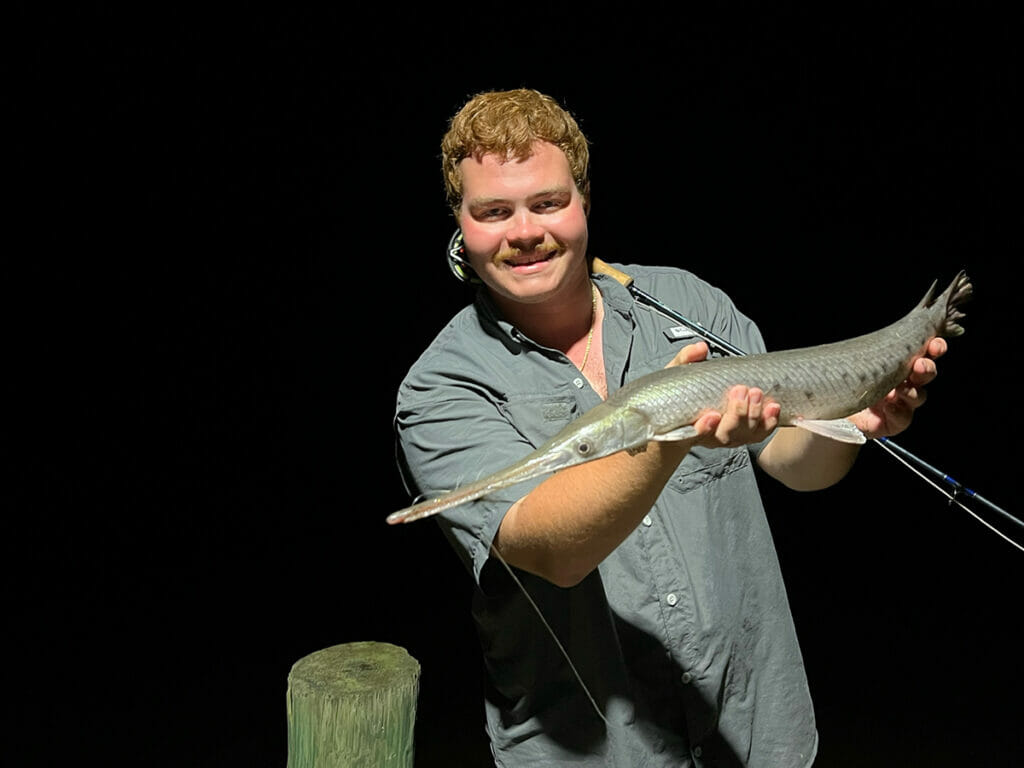
Going forward, we will have a camping trip in November with Western Carolina University’s fly fishing club down in White Top, VA. This will be a great opportunity to build club ties and share some moments of camaraderie as we get to fish the top tier trout streams in that area. We are also looking into a number of fly tying nights and guest speaker presentations to keep the momentum going during the colder months.
We are also excited about hosting a club banquet for the first time ever. With this we hope to host a night of good food, raffles, auctions, and some sort of musical and/or film entertainment in order to raise money for Trout Unlimited’s conservation efforts in the area. This event is still in the preliminary stages of planning, but we just recently received the green light from our student executive committee, so hopefully we can start setting things in motion here in the next couple of months.
We are also in the process of planning our two most popular annual trips in the winter. The first of these is our guided club trip to the South Holston River in Tennessee. Last year, Sewanee’s fly fishing club joined us on this trip, and it was an absolute blast to hang out with all of them. Secondly, we are working with our neighbors at The Virginia Military Institute to finalize everything for our annual club fly fishing tournament at Escatawba Farms. These two trips are something of a tradition for our club, and they only get better every year as we continue to add improvements and new ideas.
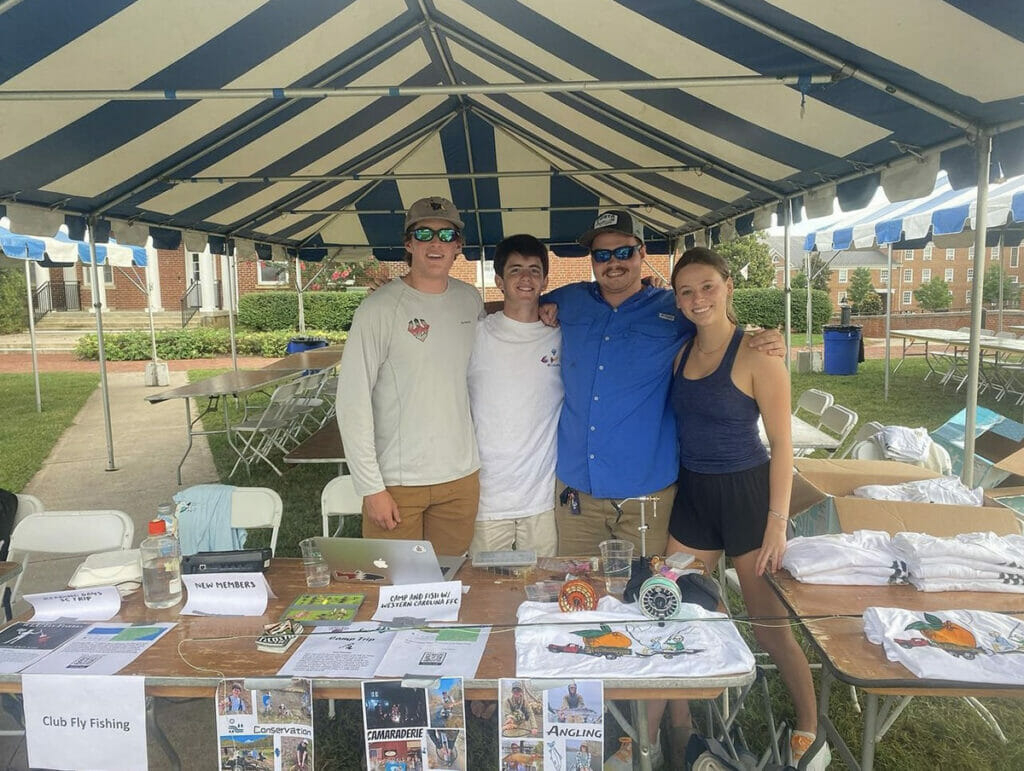
Finally, I’m sure that we’ll have several local trips and outreach events later in the year. These sorts of things seem to pop up more spontaneously as members decide they’re fishing on a certain weekend and are looking for friends to bring along. We have been in contact with the Chesapeake Bay Foundation as well, who we worked with last year on a riparian buffer restoration project, to see how they can use our help again this year. We hope to get our hands dirty working on various other conservation projects and cleanups this year. Additionally, we hope to make it down to the 5 Rivers Southeast Rendezvous in Brevard this spring!
If your club could take on any conservation, habitat restoration, or outreach/education project in your community regardless of budget, what would it be?
If money and permitting weren’t an issue, we would be extremely proud to take on a habitat restoration project similar to what was done at the nearby brook trout stream in St. Mary’s Wilderness. This stream, which was affected by years of mining activity and stocking with rainbow trout, was protected and limed to promote the native brook trout population. A project of this nature would be an admirable undertaking as it is one of many ways we can work to protect our native fish species facing habitat loss and population decline in many areas. The Appalachian Mountains are full of streams that have been plagued by acid mine drainage from old, abandoned coal mines, many of which are at high elevations and have previously supported healthy populations of brook trout. To help fight this source of anthropogenic habitat loss would be an incredible way to leave a beneficial lasting impact on the local area.
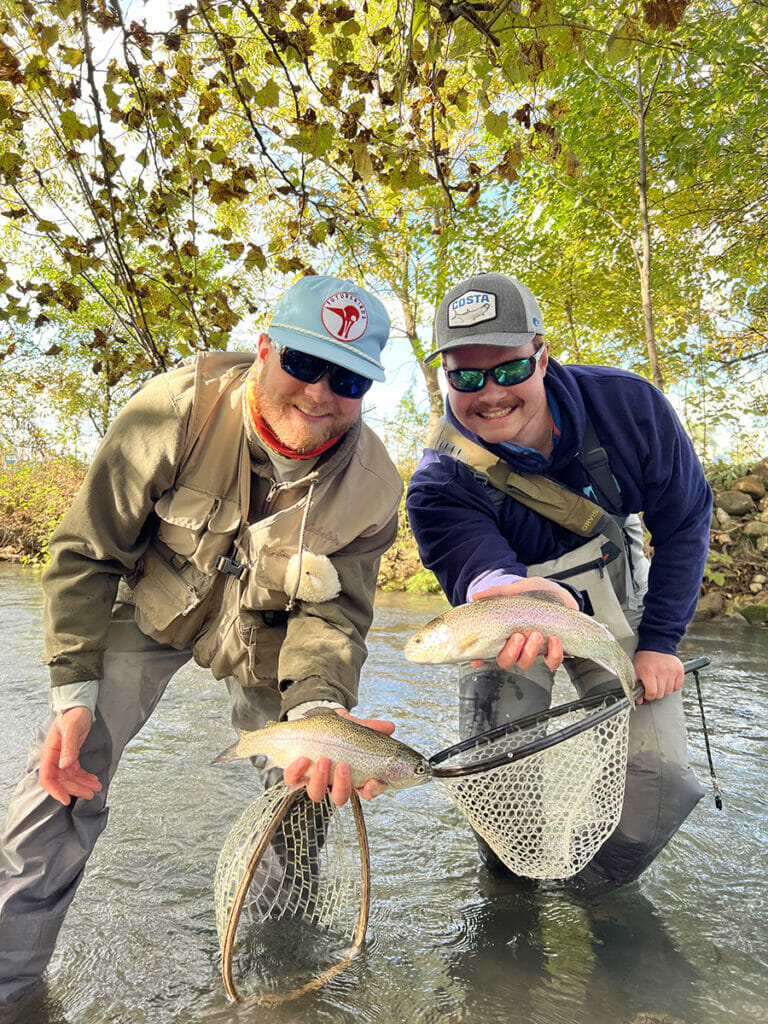
What would you say to a college student who is considering picking up a fly rod for the first time or is interested in getting more involved with the fly-fishing community?
To this student, I would say: “We’re fishing the Jackson on Friday, you in?” I’m joking, but only slightly because I think the best way to learn to fly fish is just to go do it with someone. There are plenty of experienced anglers in the club who would love to take someone new out on the water and show them the ropes. It can be challenging at first, but with an encouraging friend, a bit of patience, and a healthy dose of “fly casting 101” videos, I think that anyone can pick up a fly rod and develop a love for the sport. As a club we offer several beginner-oriented clinics and skills classes and we’re always looking to help someone new who signs up for one of our trips because one of the coolest things is to see someone pick up a fly rod for the first time and start that journey of determination towards improving and learning how to catch fish.


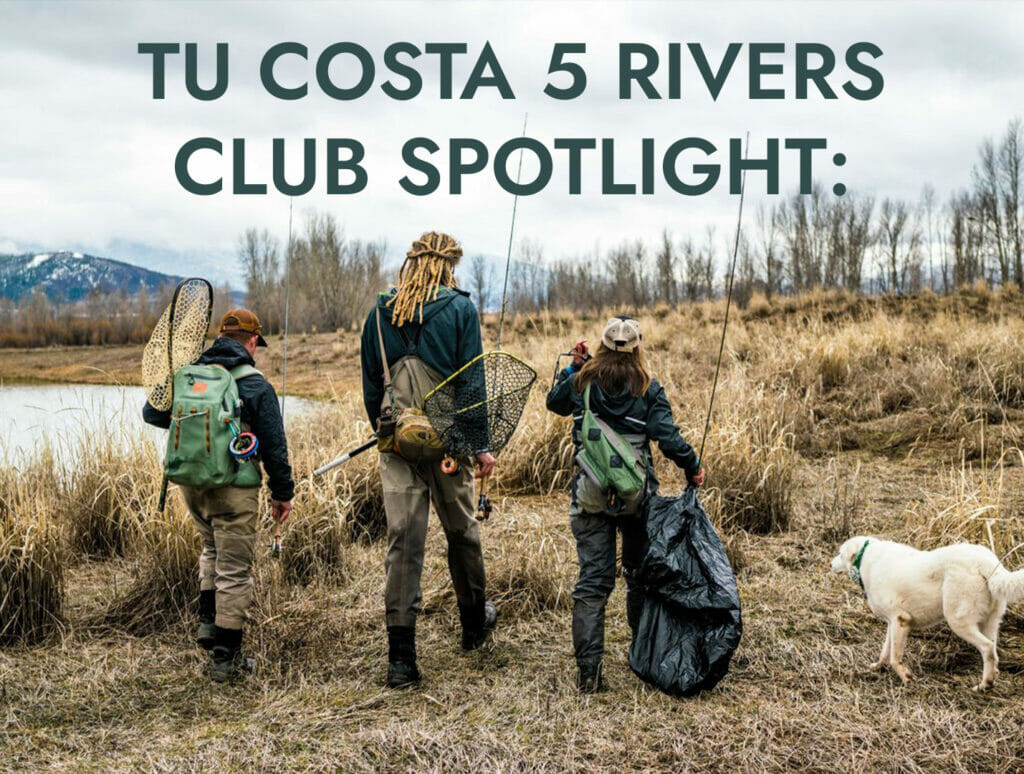
Comments